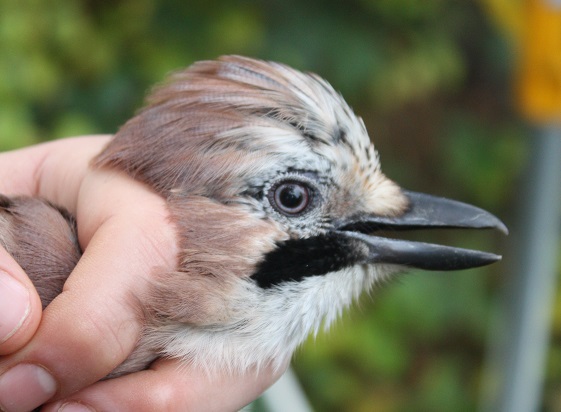The team had a good little session at Ravensroost Woods on Saturday. I gave them a lie-in: meeting at 7:00, so I had a good size team turn up: Ellie, Jonny, Charlie and his dad, Neil. We caught a reasonable number for a woodland with no winter feeding stations set up yet: 33 new and 20 retrapped birds. During the morning we were joined by a few families walking through. I was asked the perennial question: "Do you catch many of them again?" The usual argument against ringing is that the recovery rate is so low that all we are doing is trapping birds and letting them go again. This is a massive misunderstanding of the reality. In the case of my woodland sites, the recapture rate is better than 30% and, as in this case, sometimes much higher. Even on sites with high migrant throughput recovery rates are better than 10%. When you realise that natural mortality rates for first year birds in Passerines is 70% to 80%, and for adults it is 30% to 40% recovery rates in woodlands are surprisingly high. Taking all of my sites together, recaptures make up 26% of my 2016 catch (this will be diluted as we catch more winter visitors over the next two months); 21% in 2015 and 23% in 2014. Logically, one would expect the proportion to decrease as more new birds are ringed each year and survive.
The list for the day was: Jay 1; Treecreeper 1(1); Blue Tit 3(2); Great Tit 3; Coal Tit 1(1); Wren 1(4); Dunnock 1(1); Robin 2(5); Redwing 3; Blackbird (1); Goldcrest 16(5); Bullfinch 1. Totals: 33 birds ringed from 11 species; 20 retrapped from 8 species, making 53 birds processed from 12 species.
Ellie got the opportunity to process her first Jay, always a valuable lesson - they have sharp claws and strong, sharp beaks and need careful handling. She did it well, with no injury.

One of the retrapped Wrens was originally ringed as an adult in May 2013. By my reckoning that means that this small bird has survived since fledging in, at least, 2011. A five-and-a-half year-old bird, weighing less than 9g on each occasion it has been caught. The longest lived Wren, from ringing data, is 7 years 3 months and 6 days, so it has a while to go yet before becoming a record breaker.
Whilst we were processing the birds we couldn't help but notice several large flocks of small finches flying around the treetops. We never got a good view: I never had my binoculars to hand, Jonny did but they were always in silhouette. Having caught a couple of newly fledged Lesser Redpoll in the meadow in the autumn, we assumed that is what they were but Robin Griffiths tells me that there has been sightings of a couple of flocks of Siskin flying around the wood this autumn. That is pretty unusual for Ravensroost - we get the odd one in February / March time. I will be putting a couple of nyger seed feeders up to see if we can attract them down in time for our ringing demonstration on the 12th November. ST/JC/EJ/CS/NS
